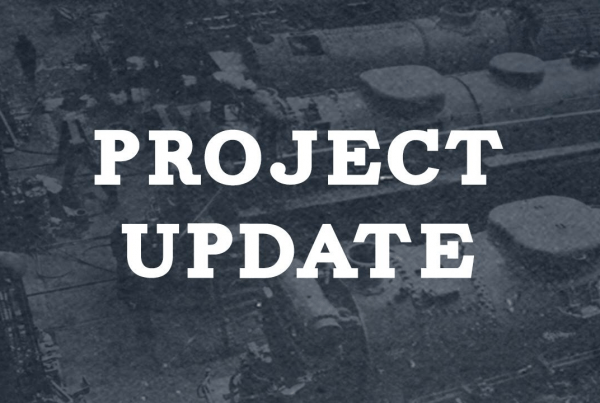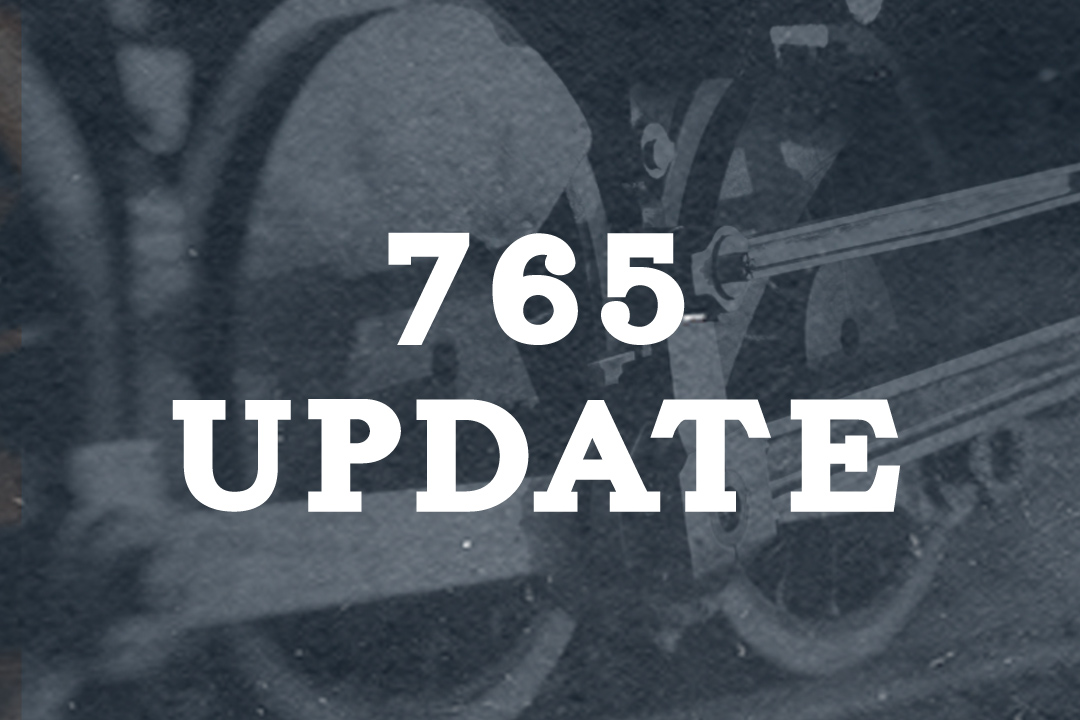Submitted by Steve Winicker.
LAST WEEKENDS SHOP ACTIVITY
The year is off and running and projects are being moved forward. Chuck Young drilled out all the stay bolt tell tales last Friday. The feedwater pump header valve handle was reinstalled after being the end being built up and the universal straightened a bit by John Jaress. Reportedly some soot and cinders were removed from the front end. The water glasses were removed from the engine in preparation for replacing the glass tubes.
Progress was made on the Grove crane with the injection pump coming back from being rebuilt. The pump was remounted in the crane. A few more parts are needed to hook up the high-pressure fuel lines. Once those are on hand, we will fire it up and hope all the problems have been worked out of it.
UPCOMING ACTIVITIES
As soon as the weather permits, we will be blowing out the 765’s flues and cleaning out the smoke box end of the engine.
SAFETY SENSE
While working on the 765 and other railroad equipment we have to loosen and tighten nuts, screws, bolts and the like as we’re maintaining, repairing and making adjustments to the equipment. Sometimes there is a tendency to “put our all” into it as we tighten up those bolts.
There may be something satisfying about pulling a wrench as hard as you can until it won’t move another hair . . . however that is not doing the equipment any good. In fact, most of the torque (bolt tightness) specifications would really surprise you. Recently the steam dome studs required replacement due to being excessively stretched as a result of over tightening of the nuts.
Besides the obvious problem of the bolt or stud being impossible to remove by the next guy, there are some more serious issues that may arise when a bolt is over tightened. Over tightened bolts undergo more stress than it was designed to handle. This not only applies to the nut, screw or bolt, but also to the framework that is being bolted into. This extra stress can cause the bolt to stretch and a crack to develop in the root of the thread thus weakening the fastener and compromising the safety of the machine especially if the fastener fails during operation.
Not only fastener failure, but injuries can occur during the process of over tightening. You can pull a muscle and the opportunity for the wrench to slip off the nut increases dramatically causing a severe hand injury, loss of balance and a potential fall.
Nuts, bolts and screws need to be tight, but there is a difference between properly tight and backbreaking. Know the standard torque to which the fastener is to be tightened and whenever necessary use a torque wrench to properly tightener the fastener. This approach will protect the fastener from damage and the worker from doing potential harm to him or herself.


